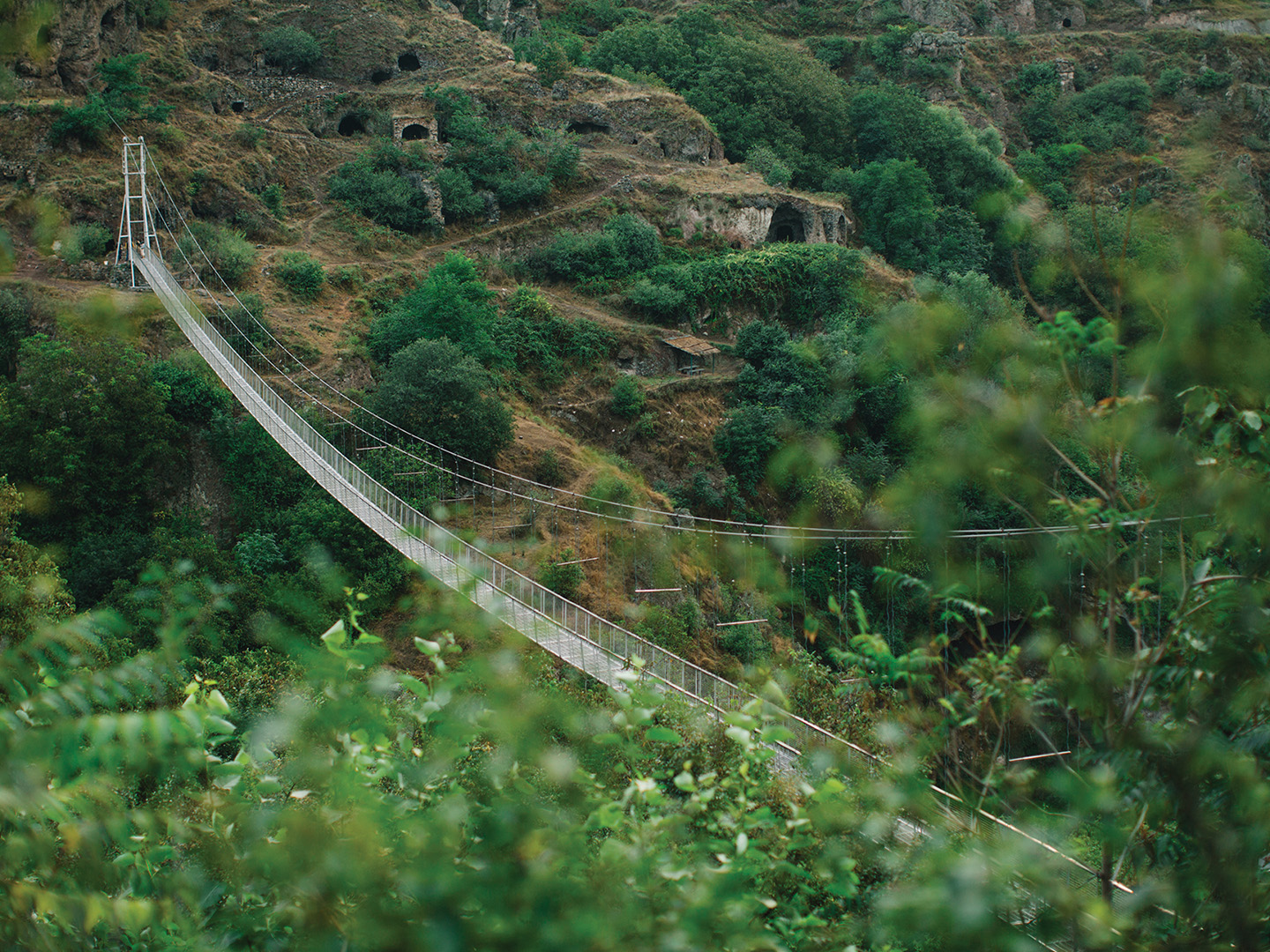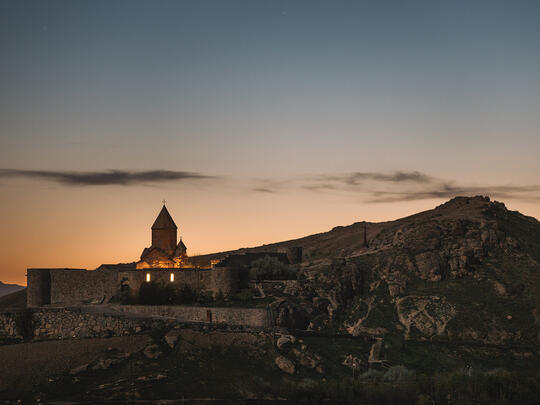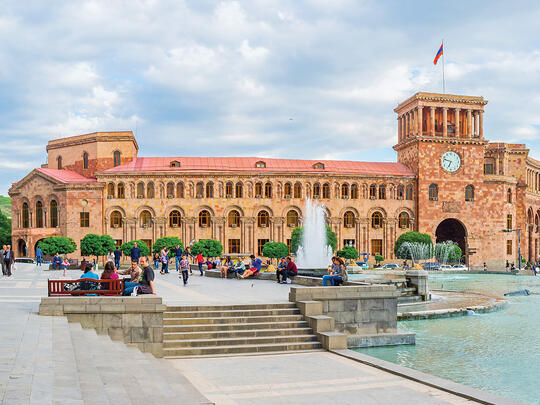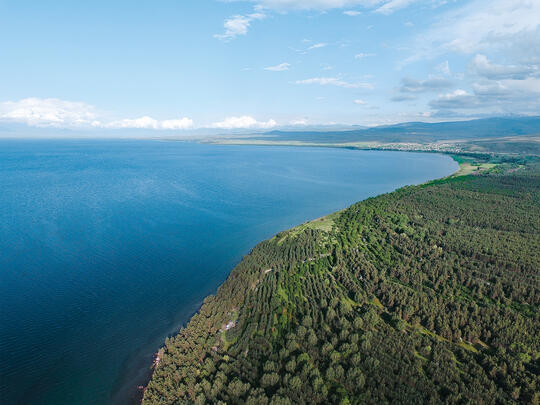There may be no better way to experience Armenia’s natural beauty, diverse landscape and welcoming generosity than a hike along the growing number of recently opened and renovated trails that are transforming the country into a worldwide trekking destination.
This past year, the country’s famed Dilijan National Park, stretching across the mountains of the Tavush region in the northeast, became home to the newest section of the Transcaucasian Trail (TCT)—a world-class, long-distance hiking trail intended to eventually connect some two-dozen current and planned national parks throughout the Caucasus region across more than 2,000 kilometers of dense forests, pristine lakes and rocky mountains few have had the chance to explore.
The recently completed trail in Dilijan offers visitors the chance to admire some of the park’s more than 1,000 native plants and 45 species of mammals, including brown bears, bobcats and wolves in their natural habitat. More adventurous explorers can follow the trail up to Parz Lake, an alpine lake more than 4,000 feet above sea level filled by clean and cool mountain springs. The lake is ideally suited for boating, fishing and camping expeditions. From the lake, along narrow paths through five miles of dense forest, hikers will discover one of the nation’s hidden architectural gems: the medieval Goshavank Monastery built in the late 12th century.

Armenia’s vast natural treasures and ancient historical landmarks have long enthralled and inspired intrepid souls who have ventured to visit the remote, and largely untouched Armenian countryside. Adventure-seekers embarked on a high-alpine trek to the summit of Mount Aragatz, the country’s highest point at 13,418 feet; explored the 100-foot-high Lastiver caves atop a series of waterfalls that cascade into the river near Agapa; and beheld the beauty of the Tatev Monastery in the picturesque Syunik region—one of Armenia’s most iconic monastic complexes—before trekking down the gorge where a new swinging bridge has made it possible to visit the Khndzoresk Cave village, an ancient settlement inhabited for a thousand years where traces of cave life can still be found.
What has changed in recent years, however, is how growing numbers of local and international hikers, volunteers and conservationists are working together as one community to help revitalize and preserve Armenia’s precious landscapes and regional heritage for future generations to enjoy.
Leading that effort is HIKEArmenia, an ongoing project to boost the tourism industry by developing hiking infrastructure and providing resources and information, including a free app that provides recommendations, GPS coordinates, points of interest and details about the difficulty level of hiking trails throughout the country. The app also connects tourists with local guides and accommodations, helping provide a much-needed boost to the local economy. The organization’s ultimate goal is to make the Armenian landscape more accessible to explorers and nature lovers while cultivating a culture of preservation and respect for the environment.

HIKEArmenia is the driving force behind the TCT project, along with several partner organizations and NGOs including OneArmenia, the Hovnanian Foundation, Caucasus Nature Funds (CNF) and ARK Armenia, which work together to help transform Armenia into a prime hiking, adventure travel and ecotourism destination. Its founder, Tom Allen, a Royal Geographical Society fellow originally from England, was inspired to map the country’s first ever long-distance hiking trail after a summer spent traversing the countryside. On his blog, he emphasizes the grassroots, communal involvement behind the project that is focused on providing public hiking infrastructure as opposed to commercial tours. “One of the things that inspires me is the inclusive and egalitarian philosophy at the heart of the movement. The team is growing fast, and although visionaries are needed to steer the ship, the guiding principle is that anyone can get involved, giving what time, energy, skills and resources they can to make the Transcaucasian Trail happen.”
One of the things that inspires me is the inclusive and egalitarian philosophy at the heart of the movement…the guiding principle is that anyone can get involved.
In the process of creating world-class hiking standards and trails, trail tourism is helping boost rural economic development in Armenia. Many recently renovated trails in the Tavush region run through remote villages with dwindling populations. Tourists represent a much-needed market for fruits and vegetables. As part of a growing number of eco-camps, locals are also being employed in upscale hostels and other accommodations that are being built to meet the needs of the growing number of visitors to the region. The hope is that the burgeoning trail and ecotourism industries will offer a viable alternative source of income for rural communities, helping to improve socio-economic conditions in sparsely populated villages that are struggling to sustain themselves.
Trail tourism has provided a new venue for international tourists to appreciate the appeal of the country’s incredible natural beauty, but also that of its people, and the welcoming generosity for which they are renowned. It is a tradition dating back to Armenia’s historic role along the Silk Road, as a gateway for merchants and travelers connecting the East to the West. Centuries later, the act of traversing the country is once again helping to bridge Armenia’s ancient culture to the rest of the world.
Banner photo by Arthur Lumen Gevorgyan












